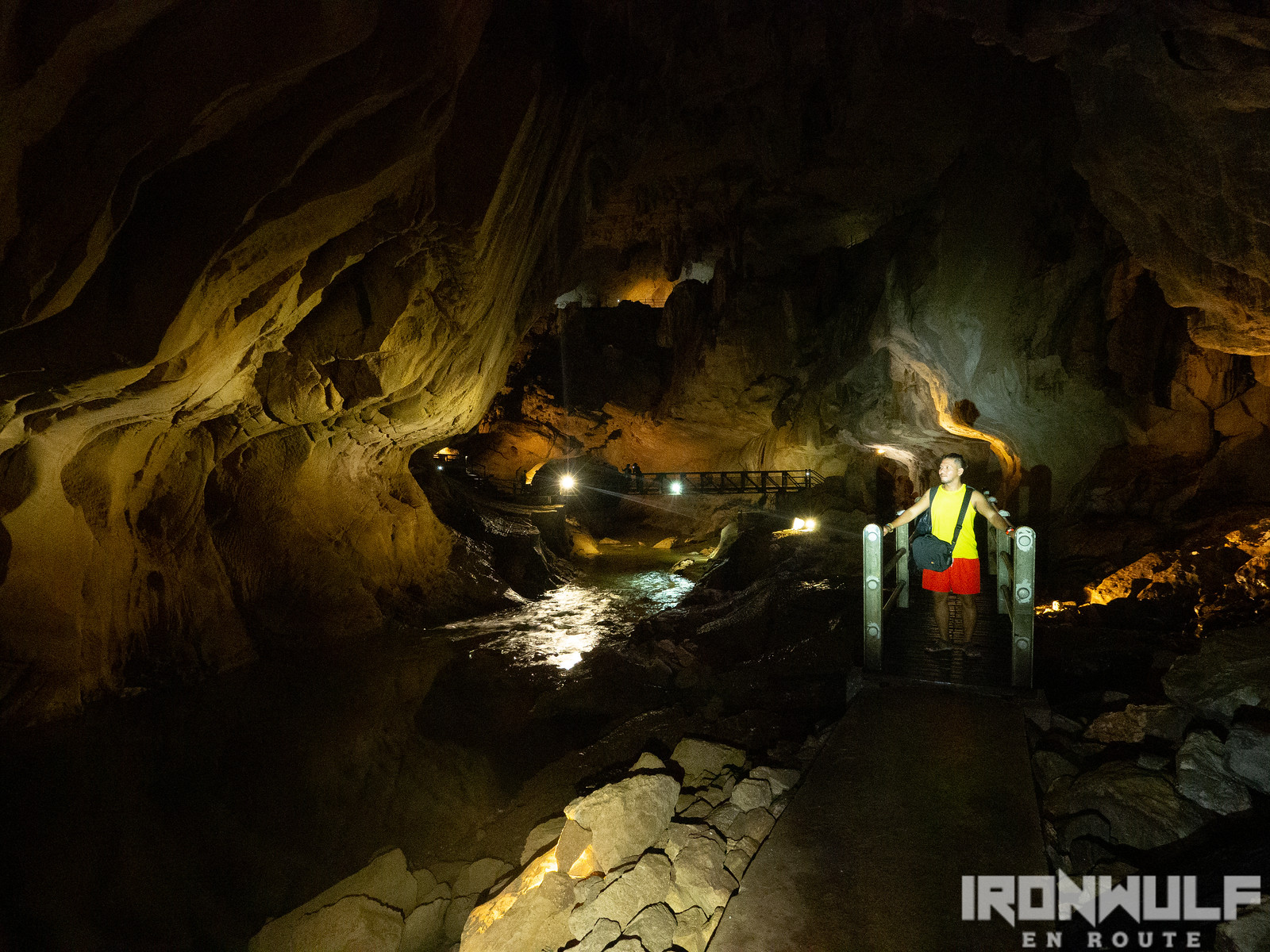Coming from Cave of the Winds, we had very short boat ride to our last cave visit – the Clearwater Cave. On the boat ride to the cave, I noticed the plank walk hanging by the rock walls leading to the cave. It looks fragile but walkable. I’m sure it would be fun to take that trail if we had more time. The boat was faster as we arrived soon at the scenic picnic area before clearwater cave. The colorful longboats gather by the riverbanks as the boatmen await each of their guests. We’re excited to explore Asia’s longest cave system but not before having our lunch first.

Clearwater Cave
At 224km long, the Clearwater Cave System is the longest cave system in Asia and considered as the 9th longest in the world as of 2020. This cave is also one of the reasons Gunung Mulu National Park is listed under UNESCO World Heritage Site. Clearwater Cave System a perfect example of how a living cave actively goes through its geological changes. A cave scientist or cave enthusiasts can observe these changes happening in real-time.
Fascinating Notches
After a hearty lunch in the midst of the trees, we climbed a 200 stone steps stairs leading to the mouth of the cave. The cave mouth itself is quite impressive already with stalactites gnawing down like teeth. A pathway lead to another set of plank walkways guiding us to a bridge where we could see the Clearwater underground river flow.

True to its name, the water that steadily flows here is clear. One could also see the astounding rock formations here they call “notches”. These are key-hole like formations created by the flow of water. Notching happens when the sediments below the water doesn’t permeate below. Instead, water eats the side walls horizontally creating the notches until sediments under gives way letting water settle below. The process repeats itself creating more cavities and passages inside the cave.
Spiky Rocks
The passageway where the river flows is fascinatingly eerie as the view is leads to darkness. As if a portal to another world. We continue walking on a pathway parallel to the river leading to another flights of stairs. This time going up to a view of a skylight. Gentle rain falls under the illuminated cavern. An oasis amidst the shadows. A platform awaits at the top for visitors to take a few breaths and enjoy the skylight view.
Observing the rocks closer, our guide, Jangin, pointed us to the rocks on the ground with an interesting spiky pattern. We noticed its spikes seem to reach towards the light opening. The rocks had gone through an interesting process called “phytokarst”. This phenomenon is caused by Cyanobacteria organisms which have plant-like cells using photosynthesis to grow. They emit carbon-dioxide which dissolves the limestones creating pits on the rock. Hence the spike like patterns that can go thin as needles.
Refreshing River
Rain caught us, as we exited the cave. It was expected as the past couple of days, the rainforest climate would give us a dash of rain and sun. We went back to our hut for some snacks then I headed out at the natural swimming area by the river banks. I caught up with a group of Europeans, probably on their upper middle age. It was funny that most of the ladies went for a swim and the men stayed by the huts. They didn’t stay long though as I found myself enjoying the river pool by myself.
The water from this pool came from the Clearwater cave. The riverbed was soft as sand. It felt great to be surrounded by all this trees while I look up the sky. Giving me a sense of belonging to nature. Floating naturally in nature’s embrace.


Ferdz Decena is an award-winning travel photographer, writer and blogger. His works has found print in publications such as Singapore Airlines’s Silver Kris, Philippine Airlines’ Mabuhay, Cebu Pacific’s Smile and Seair InFlight. He has also lent his expertise to various organizations like the Oceana Philippines, Lopez Group Foundation, Save the Children and World Vision, contributing quality images for their marketing materials.










